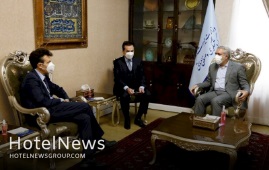
Iranian Cultural Heritage, Tourism, and Handicrafts Minister Ali-Asghar Mounesan and Giuseppe Perrone, the Italian Ambassador to Iran, discussed ways to expand tourism and cultural ties on Monday. Iran’s tourism sector achieved growth despite the adverse effects of the U.S. sanctions and the country tried to minimize the effects of the sanctions, Mounesan said. Given the positive trend of the ongoing negotiations, good opportunities will be provided to strengthen Iran’s cooperation with various countries, he added. The minister also announced Iran’s readiness to hold a joint handicrafts exhibition in Iran and Italy. Perrone, for his part, said that Iran enjoys enormous tourist attractions, which could be a good opportunity for tourism prosperity and cultural cooperation with different countries. Pointing to the joint archeological projects, carried out by Iranian ad Italian experts over the past decades, he asked for more strong cooperation in this field. In 2019, the two nations celebrated 60 years of joint missions in the field of archaeology. Tehran and Rome have enhanced cooperation over the past couple of decades, with the arenas of archaeology and cultural heritage at the topmost level. In an exclusive interview with the Tehran Times in August 2020, Perrone said: “Archaeology is certainly an area for us that is extremely important because it tells the world how our countries are heirs to ancient civilizations and this extremely important because it is part of identity, it’s part of who we are, and it helps us to better connect with one another.” “And I think because our cultural ties are so deep and so complete in every area, that we do have a responsibility to showcase this richness and to tell people the story of this important connection that has always existed between Italy and Iran in different areas so we look forward to our future projects which are going to be quite amazing,” he stated. Tens of Italian archaeologists have worked with their Iranian fellows to ace important discoveries. Their cooperation can be classified into four major lines of Joint mission in Fars province, Archaeological project in Shahr-e-Soukhteh, Sapienza University in Kermanshah project, and Expedition in Khuzestan.
Create: May 4, 2021 Edit: May 4, 2021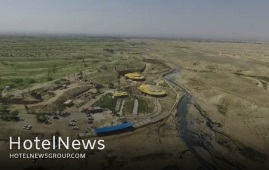
The tourism infrastructure of the natural spa region in Dehloran, the western province of Ilam is planned to be developed, the provincial tourism chief has said. A budget of five billion rials (about $120,000 at the official exchange rate of 42,000 rials per dollar) has been allocated to the project, Abdolmalek Shanbehzadeh announced on Saturday. With numerous hot mineral springs, this region could become a tourism hub in the country, the official added. Organizing, flooring, and lightening have been carried out so far in the area in close collaboration with the private sector, he explained. The Dehloran plain is best known for the excavations conducted at several prehistoric sites, which elucidated the origins and development of sedentary agricultural villages and towns in the region, and for surveys documenting the history of settlement into the modern era. As a relatively small and remote rural area, it has always been affected by political, economic, and technological developments in the adjacent regions of Khuzestan, the Zagros Mountains, and Mesopotamia. Beginning as early as the 3rd millennium BC and throughout its subsequent history, it was under the political control of kingdoms in one or another of these regions according to Iranica Encyclopedia. Although no cuneiform texts have been found at any of the Dehloran sites, the most prominent mound, Tepe Musiyan, is possible to be identified as ancient Urua, an Elamite city known from Mesopotamian texts. Dehloran has been on a trade route linking the Zagros Mountains with Mesopotamia; in the 1st millennium, the route linking the Achaemenid capitals of Susa and Ecbatana passed through the region. From the 18th century, Dehloran has been a winter resort for the local tribes.
Create: May 4, 2021 Edit: May 4, 2021
Sheraton Phoenix Downtown, Arizona’s largest hotel located in the heart of downtown, has been reimagined from top-to-bottom as part of Sheraton’s worldwide transformation of its guest experience vision. The newly renovated hotel, one of the first to display Sheraton’s new signature key elements, brings hope and renewal to the community as they prepare for a revival in tourism. Drawing on its roots as a community hub for locals and guests at flagship locations globally, the new approach for Sheraton creates an intuitive and holistic experience with places to connect, be productive and feel part of something. At Sheraton Phoenix Downtown, the modern, bold, open design pays tribute to the hotel’s iconic style, while adding a fresh, contemporary backdrop for guests to dine and imbibe in Phoenix.Marriott International’s new vision for Sheraton’s public spaces was brought to life at Sheraton Phoenix Downtown by Dallas, Texas based Looney & Associates, the interior design firm that counts Wailea Beach Marriott Resort & Spa, Ventana Big Sur and the iconic Hotel Del Coronado amongst its lauded hospitality projects. The studio of creatives has brought its penchant for color, texture and contrast to Sheraton Phoenix Downtown’s vision of community-minded spaces that feel warm and inviting for all guests. From sleek modern lines, marble countertops and accents that pop, the 1,004-room hotel is beckoning guests to connect in style in the heart of downtown Phoenix. “We are thrilled to re-introduce Sheraton Phoenix Downtown to our wonderful local community and welcome back travelers and guests who are making their return to Phoenix once again,” said General Manager Mike Ehmann. “Sheraton’s core value is to bring people together. We believe travelers will feel intrinsically linked to the Phoenix community and vice versa through the hotel’s concerted design elements that represent the heritage of the brand and warm textures of the region, and through engaging hotel programming that gives guests a sense of belonging.” Reimagined Community Spaces At the heart of the new experience at Sheraton Phoenix Downtown is the lobby. The expansive 19,000 square foot space acts as a public square for the hotel; a holistic, open area that invites people to join together or be alone amongst others, creating a sense of energy and belonging. With a flow that is natural, intuitive and uncomplicated, guests have what they need within arm’s reach, all set against an inviting backdrop that feels warm and comfortable yet refined. Anchoring the lobby is the brand’s signature “Community Table”, an inviting, purpose-built workspace that allow guests to work, eat and drink while soaking up the energy around them. Following Sheraton’s philosophy to embrace both form and function, these tables are custom designed with amenities to keep guests productive, including built-in lighting, outlets and wireless charging stations. Soundproof booths are strategically placed throughout the lobby, perfect for a spontaneous phone call to connect privately with friends, family or colleagues from afar. Guests can also make use of six uniquely-designed “Studios”, flexible gathering spaces available to book whenever a guest needs it. Built on raised platforms and enclosed with glass, the Studios allow guests to contribute to the energy of the public space while also providing privacy and focus. As travelers have a heightened desire for social-distancing, the Studios – ranging from 125 to 600 square feet – are perfect for everything from remote working to collaborating or celebrating with an intimate group, and allow guests to control the lighting, temperature and order food and drink for delivery. Guests can book the spaces through an on-demand, contactless booking system, providing them with a unique and flexible option outside of the hotel’s existing 110,000+ square feet of extensive meeting space. Built with its global, productivity-focused guest in mind, Sheraton Phoenix Downtown’s new elevated food & beverage offering creates a focal point in the lobby experience. &More by Sheraton is part bar, part coffee shop, part grab-and-go market and a central pillar of the new Sheraton vision. The outlet transitions guests seamlessly from day to night with food & beverage options that are locally-sourced, easy to consume while working and customizable to accommodate all tastes and time schedules. Open from 6:00 a.m. to 1:00 a.m., guests can begin their day with a specialty brew and cap it off with a signature cold brew gin and tonic. As of Summer 2021, guests and locals alike will also be able to enjoy a new full-service restaurant in the lobby. Refreshed Guest Rooms The 1,000+ guest rooms received a “studs to ceiling” transformation, expertly designed by Baskervill. Evoking a timeless comfort, guests are welcomed into a bright, well-lit room with warm, residential appeal, comprised of soft finishes and light wood tones accentuated with black metal accents. A platform bed and crisp white bedding centers the room of curated furniture that feels as welcoming as a friend’s guestroom. A houndstooth chair gives a pop of classic Sheraton pattern while the new 65-inch televisions are mounted to a noise cancelling, woven fabric paneling making a gorgeous statement wall. A bench running beneath the tv provides additional seating. The rooms have been reimagined with new tools for productivity, such as a height-adjustable work table, integrated power and charging and layered lighting. The bathroom features a walk-in shower or bath surrounded by neutral porcelain walls while a light wood tone vanity and backlit mirror with modern polished chrome fixtures and black finishes complement the guestroom design. Sheraton Fitness Sheraton Fitness will cater to healthy travelers courtesy of a $850,000 makeover and new partner, Technogym. The fitness center will feature state-of-the-art equipment as well as on-demand fitness classes. The fitness center will also feature an outdoor Lap Pool surrounded by lounge chairs and umbrellas, opening Early Summer. Sheraton Club The Sheraton Club Lounge, an exclusive space for Marriott Bonvoy Elite members and guests purchasing Sheraton Club access, has also undergone an upgrade as part of the transformation. The new design ensures the space is welcoming, elevated and purposefully designed for a layered and engaging experience that transitions seamlessly with activations from morning to evening. Guests will find updated food and beverage offerings, premium amenities, enhanced connectivity, and 24/7 access to provide a private environment. Commitment to Clean After temporarily closing in March 2020 due to the COVID-19 pandemic, Sheraton Phoenix Downtown has also made several adjustments to meet current demands for safe, clean and socially-distanced accommodations and programming. With safety and wellbeing a top priority for guests and employees, Sheraton Phoenix Downtown follows Marriott International’s Commitment to Clean guidelines, created in partnership with leading experts in food and water safety, hygiene and infection prevention, and hotel operations. These protocols include mandated mask-wearing for all guests and associates within the hotel, and the use of disinfectants recommended by the Centers for Disease Control and Prevention and World Health Organization to sanitize surfaces in the hotels.
Create: May 1, 2021 Edit: May 1, 2021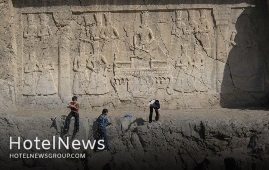
A team of cultural heritage experts has cleaned the well-known 19th-century bas-relief, which is carved on a rock face in Cheshmeh-Ali, southern Tehran. A restoration operation has been completed on the Qajar-era relief of Cheshmeh Ali, which had recently been damaged in an act of vandalism by an individual (or individuals), throwing hair dye and chemicals at the artwork, IRNA reported on Wednesday. The historical, cultural, and recreational site of Cheshmeh-Ali, literally meaning Spring of Ali, embraces an underground mineral stream that pours into an open-air pool that has long been a destination for sightseers and a recreational center for the locals. During the summertime, the site is occupied by hundreds of locals who came for swimming and having fun. Cheshmeh-Ali is in the neighborhood of the ancient Ebn-e Babveyh cemetery, the 12th-century Tughrul Tower, the historical Rashkan Castle, and next to the aged Rey Castle. Another attraction of the site is a 19th-century rock-carved relief that overlooks the pool. The artwork was commissioned by the Qajar king Fath Ali Shah who reigned from 1797 to 1834. Cheshmeh Ali also contains an archaeological site estimated to date from the 4 millennium BC. Rey was one of the capital cities of the Parthian empire (3rd century BC–3rd century CE) and it was captured by the Muslim Arabs in 641 CE. During the reign of the Muslim caliph al-Mahdi in the 8th century, the city grew in importance until it was rivaled in western Asia only by Damascus and Baghdad.
Create: May 1, 2021 Edit: May 1, 2021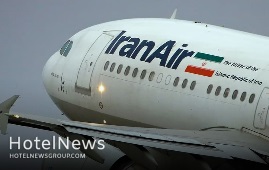
Iran has extended travel restrictions on flights to and from 15 countries due to a surge in the coronavirus disease, according to Iran Civil Aviation. The Islamic Republic has banned flights to India, Pakistan, France, Botswana, Brazil, Czech Republic, Iraq, Estonia, Ireland, Lesotho, Malawi, Mozambique, Slovakia, South Africa, and Zambia aimed to curb the disease, Meher quoted Hassan Khoshkhou, the director of Air Transport at the ICA, as saying on Wednesday. Moreover, the ban of selling air tickets to the cited countries has been declared to the travel agencies based on a decree issued by the National Headquarters for Coronavirus Control, the official explained. Iranian citizens without a negative coronavirus PCR test result are subject to medical screening and quarantine for 14 days at their own expense, while non-Iranian nationalities without the certificate are not allowed to enter the country. All passengers are subject to the medical screening on arrival, and if they are suspected of having the disease, non-Iranian nationalities will be quarantined at a place specified by the Health Ministry at their own expense and Iranian citizens will need to self-isolate for 14 days. The worldwide outbreak of COVID-19 has brought the world to a standstill, and tourism has been the worst affected of all major economic sectors. World tourist arrivals fell by 72% over the first ten months of 2020, according to data compiled by the World Tourism Organization (UNWTO) in December. Iran has also suffered the same fate as, according to available data, its foreign arrivals plunged 72% during the first eight months of 2020 when compared to 2019. New cases and mortalities In a press briefing on Wednesday, Iran's Health Ministry’s spokesperson confirmed 21,713 new cases of COVID-19 infection, raising the total number of infections to 2,459,906. She added that 1,923,081 patients have so far recovered, but 5,338 remain in critical conditions of the disease."During the past 24 hours, 434 patients have lost their lives, bringing the total number of deaths to 70,966," she added. So far, some 15,562,560 COVID-19 diagnostic tests have been performed in the country.
Create: May 1, 2021 Edit: May 1, 2021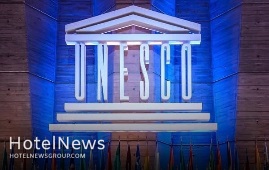
Iran seeks to register five intangible elements on UNESCO’s list of Intangible Cultural Heritage of Humanity in near future, Mehr reported on Tuesday. The country has recently submitted [revised] dossiers for the ancient festivities of Mehregan and Yalda, crafting and playing [the stringed instrument of] the Oud, traditional craft of silk spinning, and Turkmen Duzi (a kind of traditional textile being practiced by Iranian Turkman tribes), the report said. Yalda (the birth of a new sun), which is also called Yalda Night, is celebrated on the eve of the winter solstice, which falls on the last day of Azar (the last month of autumn in the Iranian calendar year). On that graceful night, the winter chill is vanquished and the warmth of love embraces the entire family. It’s a time for pleasant family reunions that entails laughter, merriment, and good cheer. According to UNESCO, Yalda ceremonies, in the best way, point to cultural diversity and human creativity, especially when one considers the wide range of the communities that celebrate it. Mehregan celebration, which falls on the 196th day of the Iranian calendar year that usually equals October 2 in the Gregorian calendar, brings together clusters of Iranian Zoroastrians to hold reunions in celebration of Mithra, an ancient goddess of friendship, affection, and love. A key feature for the event is large spreads in purple laden with various ingredients, dishes, and elements each on behalf of a particular belief. Fruits, vegetables, dried nuts, sweets, rosewater, grilled lamb meat, lotus seeds, and silver coins, and a scale are typically placed, the latter symbolizes autumnal equinox. The oud is a pear-shaped stringed instrument frequently used in Persian and Middle Eastern music whose construction is similar to that of the lute. It was thought that this musical instrument was invented by nomad tribes since it was light and mobile. Some believe it was originated in the Caucasus region, other sources report more western regions as a point of origin. Some findings show an early elliptical design of Oud found in the ruins of Shush, Iran. Some experts theorize that a priest is shown to be playing it in that depiction. The Islamic Republic expects to reap a bonanza from its numerous tourist spots such as bazaars, museums, mosques, bridges, bathhouses, madrasas, mausoleums, churches, towers, and mansions, of which 24 being inscribed on the UNESCO World Heritage list. Under the 2025 Tourism Vision Plan, Iran aims to increase the number of tourist arrivals from 4.8 million in 2014 to 20 million in 2025.
Create: May 1, 2021 Edit: May 1, 2021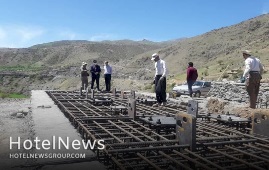
West Asia’s longest glass suspension bridge with a length of 450 meters is being constructed in the village of Negel, west province of Kordestan, the provincial tourism chief has said. The suspension bridge is a part of a bigger tourist complex including a zip line, eagle zip line, bungee jumping, and rafting, which is unique in the country, Yaqub Guylian announced on Tuesday. The complex also includes a restaurant, pergola, amusement park, and eight accommodation units, the official added. A budget of 500 billion rials (about $12 million at the official exchange rate of 42,000 rials) has been allocated to the project, which aims at attracting more domestic and foreign tourists to the region, he explained. A suspension bridge made of curved sheets of glass, which is the first of its kind in the world, was inaugurated in Ardebil province, northwest Iran in January 2020. However, inaugurated in 2015, and with 345 meters long, 3 meters wide, and 80 meters high, the Meshginshahr suspension bridge is said to be the largest of its kind in West Asia. Last Year Ardebil’s tourism officials announced that the world’s longest suspension bridge with a length of 500 meters is being constructed in the province and is expected to come on stream in June 2021. The name Kordestan refers to the region’s principal inhabitants. After the Turkish invasion of Iran in the 11th century CE (Seljuq period), the name Kurdistan was applied to the region comprising the northwestern Zagros Mountains. It was during the reign of Abbas I the Great of Iran’s Safavid dynasty (1501–1736) that the Kurds rose to prominence, having been enlisted by Abbas I to help stem the attacks of the marauding Uzbeks from the east in the early 17th century.
Create: Apr 28, 2021 Edit: Apr 28, 2021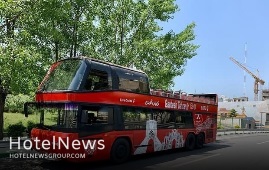
In a symbolic gesture initiated by Tehran Miniciapility, a hop-on hop-off bus on Sunday started roaming the downtown streets of the Iranian capital to mark healthcare workers who lost their lives to COVID-19. Hundreds of front-line health professionals have so far died in the fight against the coronavirus pandemic. According to available official data, some 60 percent of the martyrs were physicians, 20 percent were nurses and the rest were other hospital staff.On January 27, Health Minister Saeed Namaki said Iran will soon be one of the world’s important manufacturers of the COVID-19 vaccine.The novel coronavirus pandemic has brought travel to a standstill nearly all over the globe, including Iran, causing huge job and revenue losses. However, experts believe the impact of virus infection would be temporary and short-lived for the Islamic Republic, which ranked the third fastest-growing tourism destination in 2019.Iran is home to one of the world’s oldest continuous major civilizations, embracing settlements dating back to 4000 BC.
Create: Apr 27, 2021 Edit: Apr 27, 2021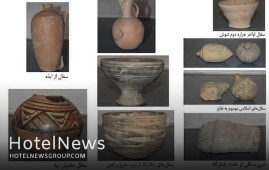
A total of 100 Iranian relics, which were on loan to the British Institute of Persian Studies (BIPS) for some half a century, have been finally returned home, ISNA reported on Saturday. "Through cultural diplomacy, another collection of [Iranian relics, which contains] 10,000 cultural materials, including 100 museum objects have been returned to the National Museum of Iran after half a century. The objects were on loan to the British Institute of Iranian Studies," the news agency quoted Iran's tourism minister as saying. We hope to set up a public exhibition of the relics at the National Museum of Iran in near future, Ali-Asghar Mounesan added, the report said. The museum objects are made of stone, pottery, bone, brick, etc., and the documentation of these works is on the agenda of the National Museum of Iran, the official noted. "The Tehran headquarters of the British Institute of Persian Studies used to be home to groups of British archaeologists and Iranologists who came to Iran to study, visit, conduct field studies and archaeological excavations…," the minister explained. BIPS was founded in 1961 to promote and encourage the study of Iran, its history, civilisation, and culture in all periods of history. Much of BIPS research and work in its early years was in the field of archaeology. In 1976 BIPS opened its purpose-built centre in northern Tehran, designed by Reza Khazeni architects. The Tehran centre houses an extensive library that exceeds 40,000 English and Persian language volumes, journals and periodicals as well as epigraphic material, maps, photographic and fieldwork archives; a unique resource that is open to Iranian students, scholars and members of the public. It is thought to be the largest collection of English language volumes in Iran. The Tehran centre remains one of the few overseas institutes continuing to operate in Iran. It also houses a hostel for the use of visiting academics and students. BIPS is one of a small number of British International Research Institutes funded by the British Academy, the UK’s national body for the humanities and social sciences. BIPS is also a member organisation, with a worldwide membership, open to anyone with an interest in Iran and the Persianate world.
Create: Apr 26, 2021 Edit: Apr 26, 2021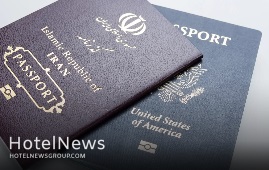
Iran has moved up from 101st to 99th place with visa-free access to 42 countries around the world, Donya-e-eqtesad reported. Iran's visa-free access includes visas on arrival to the countries such as Azerbaijan, Qatar, Lebanon, Turkey, Armenia, Georgia, Oman, Syria (Middle East), Sri Lanka, Maldives, and Macau (China), Cambodia, Malaysia, and Nepal. The latest results, released by the Henley Passport Index, indicate that the gap in travel freedom is now at its largest since the index began in 2006, with Japanese passport holders able to access 167 more destinations than citizens of Afghanistan, who can visit only 26 destinations worldwide without acquiring a visa in advance. Japan firmly holds onto the number one spot. Holders of a Japanese passport have visa-free access to 193 destinations worldwide. Singapore is still in second place on the list with access to 192 destinations without needing a visa, and South Korea and Germany share third place with 191 visa-free destinations. Italy, Finland, Spain, and Luxembourg share fourth place, with Denmark, Austria, and Sweden sharing the fifth spot. Based on the index, the weakest passports which require the highest number of visas when traveling around the world are the passports of Afghanistan, Iraq, Syria, Pakistan, Yemen, Somalia, and Palestinian Territory. The novel coronavirus pandemic has brought travel to a standstill nearly all over the globe, including Iran, causing huge job and revenue losses. However, experts believe the impact of virus infection would be temporary and short-lived for the Islamic Republic, which ranked the third fastest-growing tourism destination in 2019. Iran is home to one of the world’s oldest continuous major civilizations, embracing settlements dating back to 4000 BC.
Create: Apr 26, 2021 Edit: Apr 26, 2021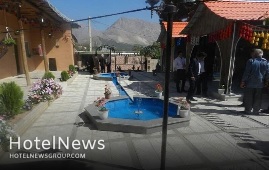
Extra support for digital businesses and various travel branches could rocket up the tourism industry in Kohgiluyeh and Boyer-Ahmad province, the provincial tourism chief has said. Digital businesses amid the outbreak of the coronavirus in the country, which causes a major hit to the economic sectors including tourism, could help to increase the income of people active in this field, IRNA quoted Majid Safai as saying on Saturday. Considering the weather of the area and the farms of fish, saffron, silkworm, and ostrich as well as rice paddies scattered across the province, it has the potential to become a hub for agritourism and other new branches of tourism, the official added. Agritourism is a relatively new branch of the travel industry in which tourists stay with local people in rural areas. Farm/ranch recreation refers to activities conducted on private agricultural lands, which might include fee-hunting and fishing, overnight stays, educational activities, etc. To achieve this goal, residential units, echo-lodges, and tourist complexes need to be improved, he explained. He also noted that ongoing tourism-related projects need to be completed, while new investment packages are being defined to attract more investors to the region. While most of the activities in this field are on halt due to the coronavirus pandemic over the globe, virtual festivals and online tours could help to promote the tourist attractions of the province, he said. Last year, the official announced that the tourism sector of Kohgiluyeh and Boyer-Ahmad province is prepared to improve quickly after the coronavirus crisis ends. He also noted that innovative plans and programs and various cultural festivals are being organized to attract tourists and travelers to the alluring destinations of the province. The lesser-known Kohgiluyeh and Boyer-Ahmad province is a cradle for nomadic life. Sightseers may live with a nomadic or rural family for a while or enjoy an independent stay and assist them with day-to-day life. It also opens up an opportunity to feel rustic routines, their agriculture, traditions, arts, and culture.
Create: Apr 25, 2021 Edit: Apr 25, 2021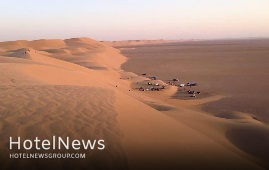
Imagine traveling through a bizarre-shaded desert full of golden dunes that locals believe to be once home to evil spirits and demons, and for this reason, whoever steps on it will be swallowed up and never returns! That’s why the area is known as the "Bermuda triangle" of Iran! Eastern Iran is dominated by vast deserts known worldwide for adrenaline chasers. Rig-e Jenn assumed its name from whom believed that it was haunted by spirits and the devil. The bizarre desert can be reached after hours first on asphalt roads, and then for some hours through uninhabited terrain. Rig-Jenn is situated in a border area between Semnan and Isfahan provinces. In another world, it is part of Dasht-e Kavir (the central desert of Iran). The bizarre desert can be reached after hours first on asphalt roads, and then for some hours through uninhabited terrain. Narratives say that even caravans used to skip passing through Rig-e Jenn, believing it to be a place where evil spirits and “jinn” dwell. A “jinn” is a spirit in Islamic culture and Rig-e Jenn was once (and in some places still) believed to accommodate evil spirits! Even today, amongst the neighboring towns and villages some still hold this belief. Sources say that Sven Hedin, the famous Swedish desert explorer avoided the area during his 1900s travels to Iranian deserts and in the 1930s, Alfons Gabriel only managed to cross the southern ‘tail’ of the desert on his way from Ashin to Aroosan. According to Visit Iran, an official travel guide to the country, Rig-e Jenn marshes are among the most dangerous parts of this desert coming out of which is not easy so that it can even lead to death. But apart from these dangers, most of the statements about Rig-e Jenn are related to fiction. Locals believe in some fiction and stories that left many questions unanswered. However, the cause of most of these phenomena has today been recognized. For example, a sound is heard in the desert that is known as the Cry of Stone. The cause of this natural phenomenon is the expansion and contraction of stones and breaking them as a result of the temperature difference between day and night. However, you can enjoy, regardless of these fictions, an exciting journey to Rig-e Jenn. Also, you can experience attractive travel across the desert by off-road equipped vehicles or by motorcycle. One can also cross the desert barefoot and enjoy being touched by the hot sands of Kavir. If you want to stay for a night in this region observing the desert sky that is full of stars is highly recommended. If you still dare to visit Rig-e Jen (“Dune of the Jinn”), a name given to the mysterious desert by the locals, to have some adventure, you have to be careful about safety tips. Experienced adventurers say one should not choose this desert as their first hiking and trekking destination and they should not travel alone; it’s in the middle of nowhere and the only way to access it is by passing through a harsh train with almost no phone coverage. If you are planning to pay a visit, bear in mind that sometimes fierce winds howl throughout Rig-e Jenn voicing fears to passersby! People who have been there saying it feels almost like walking across an ocean floor without water. It is where eye-catching structures and shapes are only formed by constant winds blowing across vast areas of sand that can almost look unreal and “too” smooth. Those who set up camps are well rewarded when the sun sets. It’s the right time for a very bright moon and extremely vivid stars to show off in the absolutely clear sky of the desert. Like other deserts of the country, autumns and winters are the best time to travel to Rig-e Jenn. However, it is a must to carefully check the weather forecasts before traveling to this area. Finally, a feasible path through the Rig-e Jenn was found some years ago by trial and error using modern equipment such as 4WDs, maps, aerial photos, laptops, GPS devices, and aids.
Create: Apr 25, 2021 Edit: Apr 25, 2021